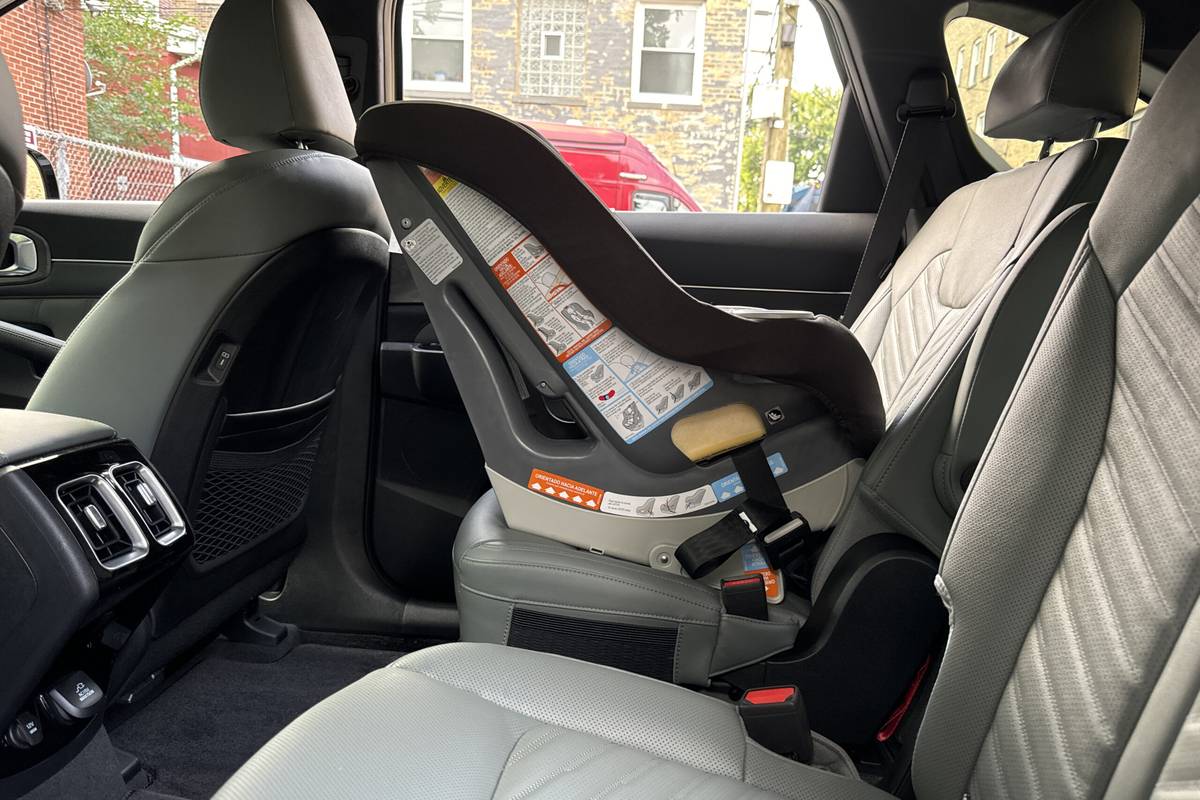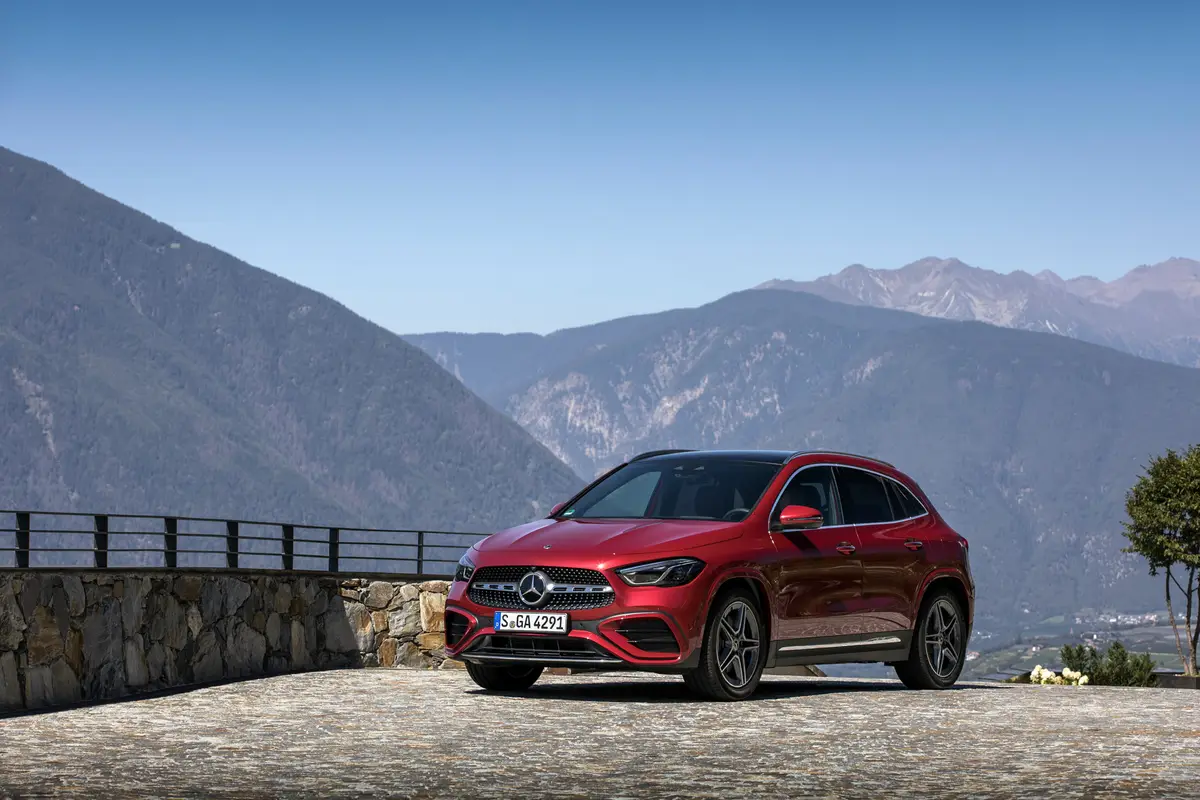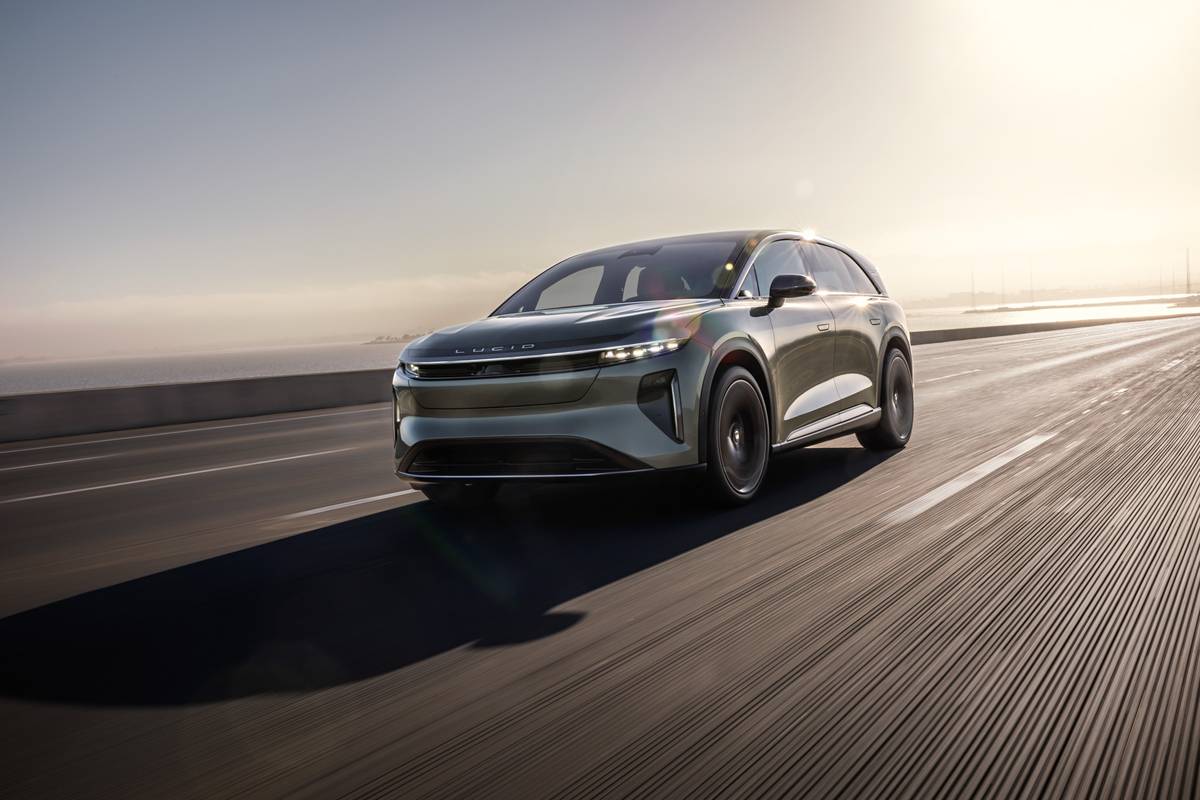Detroit Newspapers's view
Attention Munich! Attention Stuttgart! And you folks at Cadillac had better listen up, too.
If you’ve been thinking that Lexus couldn’t — or wouldn’t — build a real road-burning sport sedan in the manner of BMW and Mercedes-Benz, here’s your wake-up call.
The 1998 Lexus GS 400 is one hot tamale: posh, potent, and loaded with leading-edge technology.
It makes the elegant LS 400 sedan seem positively sedate, despite a 20-horsepower boost for 1998. And it makes the ’97 GS 300 feel like a Buick.
It gets better (or worse, depending on your allegiances). Lexus is offering this executive hot rod with a base price — $45,295, including a $495 delivery charge — that undercuts the base price of the ’97 GS 300 by almost a grand.
The base price for a ’98 GS 300, meanwhile, has been trimmed to $37,295.
While this pricing strategy probably won’t arouse joy in those who paid top dollar for the previous edition, it adds up to a very attractive buy in a luxury performance sedan.
A little history: This is the second generation of the GS, which was launched in 1993 to slot between the ES 300 and LS 400 in the Lexus sedan range.
Conceived and marketed as a sport sedan, the original GS 300 had 220 horsepower from a 3.0-liter in-line six-cylinder engine.
The redesigned GS extracts 225 hp from the 300’s in-line-six, and — a carefully kept surprise — adds the V8-propelled GS 400.
Beyond the expected chassis-stiffening we’re seeing in all new cars these days, the new GS rides a slightly longer wheelbase with a revised rear suspension.
More significant, the redesigned body is a tad wider, a little taller and almost six inches shorter. Despite that, the design team still managed to find a little more leg space behind the front seats, as well as an extra cubic foot in the trunk.
But for all its refinement, the real story here is performance, and a formidable challenge to the European luxury sport sedan establishment.
Right here, right now
Let’s talk power.
The GS 300’s improved six hustles the new car to 60 m.p.h. in roughly 7.5 seconds — about a second quicker than the ’97 version.
That’s respectable, but the GS 400 can make the same sprint in six seconds or less — positively torrid. Top-end speed is electronically limited to 150 m.p.h., and passing performance is of the right-now variety.
The key to the exceptional thrust of both engines is a new system that Toyota calls VVT-i (for Variable Valve Timing with intelligence), and it’s an elegant piece of engineering.
The timing in question has to do with when the intake valves open relative to the closing of the exhaust valves, a relationship called overlap.
Low or zero overlap is desirable for smooth operation at idle and reduced engine speeds. Lots of overlap at high engine speeds helps to generate horsepower.
There are a number of variable timing designs in use today, such as Honda’s excellent VTEC system, which is employed in almost every v ehicle that Honda makes.
But most of these systems are bimodal — one setting for ordinary operation, another for extra power. VVT-i, in contrast, continuously varies the timing of the valves as the engine revs up. That’s a first for a passenger car offered in this country.
The result is an impressive improvement in maximum power and torque, higher all-around efficiency, improved emissions performance and even some small gain in fuel economy, as well as absolutely seamless operation.
Applied to the Lexus 4.0-liter V8 — a pretty efficient engine to begin with — the GS 400’s VVT-i technology yields a sizzling 300 horsepower and 310 foot-pounds of torque, compared to 260 hp and 270 foot-pounds for the previous incarnation of this engine, which was used in the ’97 LS 400 sedan and SC 400 coupe.
(A slightly less aggressive version of the VVT-i system bumps down output for the ’98 LS 400 to 280 hp and 300 foot-pounds.)
Those are amazing increases, and I think it’s fair to say th at Toyota’s VVT-i system breaks new ground in extracting the most from a given engine displacement without resorting to super- or turbo-charging.
More new stuff
Both engines are mated to a new five-speed automatic transmission, and in the GS 400 this includes a new “E-Shift” feature that allows the driver to semi-manually row up and down the gearbox via push buttons mounted on the steering wheel spokes.
The GS line also offers a new Vehicle Skid Control (VSC) system, similar in concept to the Mercedes ESP and Cadillac StabiliTrak by reducing engine power and/or applying the brakes on one or more wheels to restore stability and/or traction when its sensors detect problems with either or both.
Based on a short demo on a water-soaked slalom course, I’d say VSC’s sophistication compares favorably with the Cadillac system, and is less intrusive than Mercedes’ ESP.
And for real back-road barnstorming, it has yet another virtue: You can switch it off.
Still more: The high-intensity discharge head lamps (optional) have an automatic leveling feature to keep the light on the road (and out of the eyes of oncoming drivers) when the car goes over bumps or dips.
Front seat passengers get additional side-impact protection with seat-mounted side air bags, as well as a number of a variety of reinforcements and padding in all four doors.
The steering wheel features power tilt and telescope adjustability. Combined with a wide range of power adjustability in the leather-clad bucket seats, it’s easy to get just the right driving position, regardless of your personal dimensions.
Another detail that stands out in the GS 400’s well-organized and beautifully appointed interior is the new Opitron instrumentation, featuring black-on-white graphics and blue-white illumination that operates any time the car is running.
I’m not crazy about black-on-white instruments — traditional white-on-black is easier to read, in my estimation — but thanks to the unique lighting, this setup is highly legible and also looks very cool indeed.
Surefooted power
In addition to its major league muscle, the GS 400 is a model of high-speed stability, and more than holds its own when the curves come in bunches.
I’ve seen 140 m.p.h. on the speedometer during a press preview at Roger Penske’s new California Speedway, and the car felt as surefooted and predictable as it did when I turned into my driveway last week.
Predictable also applies to the car’s behavior in aggressive driving on winding roads — minimal body roll, generally accurate steering, above-average willingness to change directions. Overall, however, the GS 400’s suspension is still skewed more toward ride comfort (versus absolute handling) than in, say, a BMW 540i.
As you might imagine, that’s a plus on some of Detroit’s lumpy downtown interchanges, and the GS 300 is noticeably softer still.
There are a few quirks. The automati c transmission, for example, takes its sweet time to shift down more than one gear when you want extra passing power, and the semi-manual E-Shift doesn’t allow the driver to downshift below second gear.
As for the styling, it’s a mixed review. There’s a lot more drama in the front end, which borrows freely — and successfully — from the gorgeous SC coupes. And reducing the front overhang certainly lends a purposeful air to the proportions.
But from certain angles, particularly in profile, the rear end looks a little chunky to me.
Nevertheless, the GS 400 is an impressive achievement, an exceptional blend of invention and performance that ranks with the best.
Factor price into the equation — my loaded test car ($1,700 chrome wheels, $1,050 in-dash CD changer, $1,020 power moonroof, $420 seat heaters, $420 rear spoiler, $215 high performance 17-inch tires) cost about the same as the base price for a BMW 540i or Mercedes-Benz E420 — and you’ve got a sport sedan buy that’s toug h to beat.
And as usual, the Lexus message is clear: These people are serious.
SPECS
RATING: 4 wheels
VEHICLE TYPE: Front engine, rear-drive, midsize, luxury sport sedan
KEY COMPETITORS: BMW 540i, Cadillac Seville STS, Mercedes-Benz E420
BASE PRICE: $45,295
PRICE AS TESTED: $50,620
STANDARD EQUIPMENT: ABS, traction control, front and side air bags, five-speed automatic transmission, automatic climate control, AM/FM/cassette audio, power leather seats, keyless remote entry, power windows, cruise control, power tilt/ telescope steering, security system, aluminum alloy wheels
SPECIFICATIONS:
(manufacturer’s data)
Engine 300-hp 4.0-liter V8
EPA fuel econ. 17 city/23 hwy.
Curb weight 3,690 pounds
Wheelbase 110.2 inches
Length 189.0 inches
Width 70.9 inches
Height 56.7 inches
Where assembled Japan
Latest news



